Story by Christopher Hector & Photos by Roz Neave
The Brandenburg stud at Neustadt-Dosse, was part of the former GDR – the eastern part of the divided Germany – and when we first visited, in 1989, the Berlin Wall had only come down a few months earlier, but the area still looked very poor, especially since we’d come from the luxurious look, that is parts at least, Hamburg.
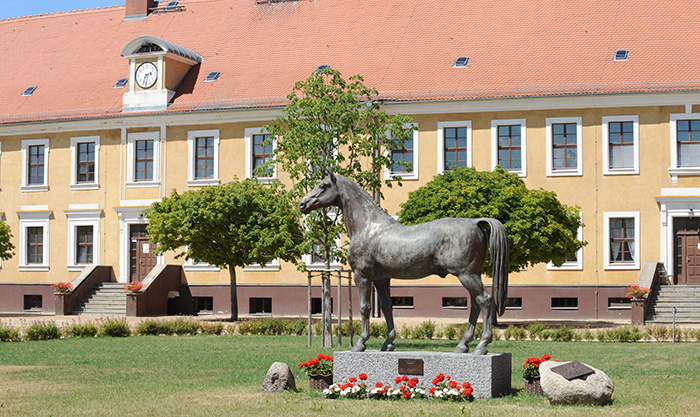
The buildings may have looked in need of a coat of paint, but it was amazing for us to walk up to the main building and see the date it was built – 1788 – the same year that Australia’s first fleet reached Sydney Harbour, and the new colony was established. Twenty-five years on, those buildings are looking very flash indeed, with the help of millions of euros from the European Common Market, and Dr Müller is still looking sharp, still filled with his vision for the stud, even as he approaches the end of his career…
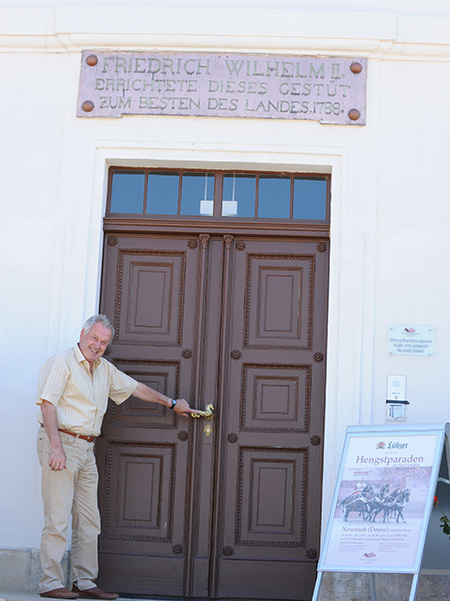
When you started out as the director here at Neustadt-Dosse, you were the youngest landstallmeister in Germany, now I believe you are the most senior, and your stud has gone from one of the poorest to one of the most magnificent…
“I started my career here in 1975, I was 29 years old. We were at this time in the GDR, the centre for horse exporting. In one year we sold between 500 and 600 horses from three to eight years old, many of them, about 80% went to the ‘other’ part of Germany. Now we have a new time, we have taken some new stallions from the other part of Germany, and we have been very successful. I think perhaps our greatest success was winning the World Championships with Poetin, then she was sold for €2,500,000 to Mr Schockemöhle, that was another success for us. Our stud is now very respected in Germany and internationally.”
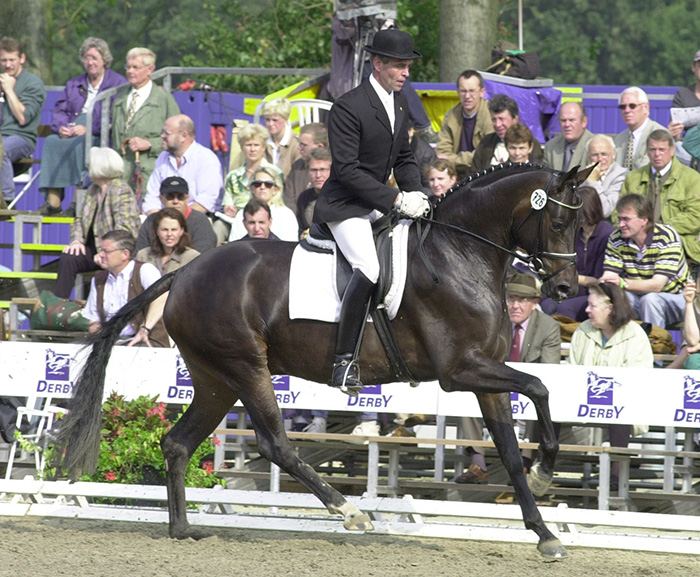
Poetin winning at the Bundeschampionate with Hans Heinrich Meyer zu Strohen
“It was turned into a foundation in 2001 so it was possible to receive a grant from the European Community for re-construction and new buildings. Over the last five years, we have used €40,000,000 – it has been a very nice time.”
The State Stud at Neustadt Dosse was founded in 1788 by the Prussian King and the stud has been breeding horses since then, but now is a World Heritage site and has 50,000-60,000 visitors a year
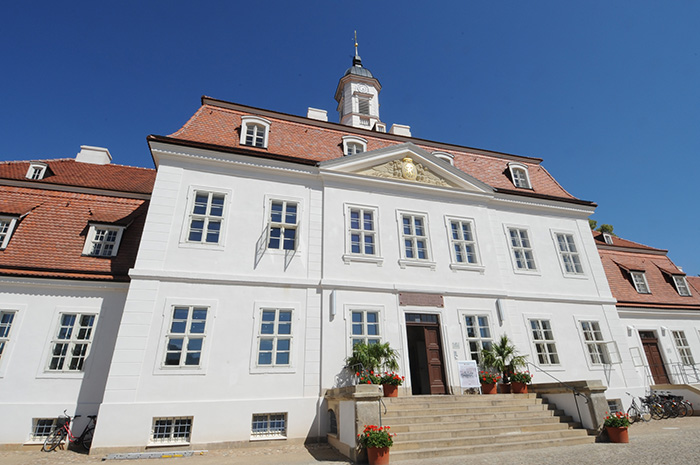
Where-ever I go in Europe, I hear the same thing, breeding is down, is this affecting you?
“For sure, but for us not so much. We have talked with the ten state studs of Germany, and all the state studs find horse breeding and the coverings of the mares, is going down. For us, it was not so bad, we have very good stallions – Quaterback is covering over 200 mares, and now Belantis, our new champion, is doing the same. I hope that the time when horse breeding goes down is a little bit over, and in the next years we see some growth. In the last year, we sold many horses in Germany, also a very fine stallion to Russia for a good price, and also one very expensive horse to the United States – it was a very talented dressage horse.”
Belantis being ridden for the stud by Beatrice Buchwald, a pupil of Isabell Werth
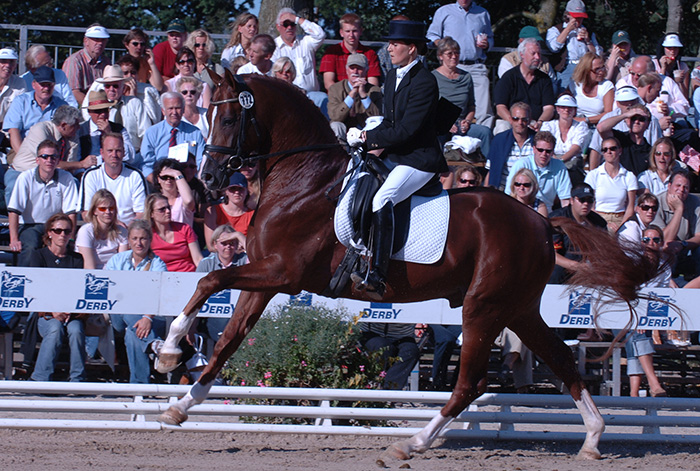
Quaterback shows the canter for 12
“Quaterback is now eleven years old, and he is now the sire of 56 stallion sons, licensed all over the world. The quality from him is very good – in trot and very good in canter. When he won at the Bundeschampionate in 2006, the judges said they should have given him 12 for the canter, we are sorry that it is only possible to give 10. He has very good foals, we send semen all over the world. That is our bank, and we wish him a long life so that we can make a little bit more money.”
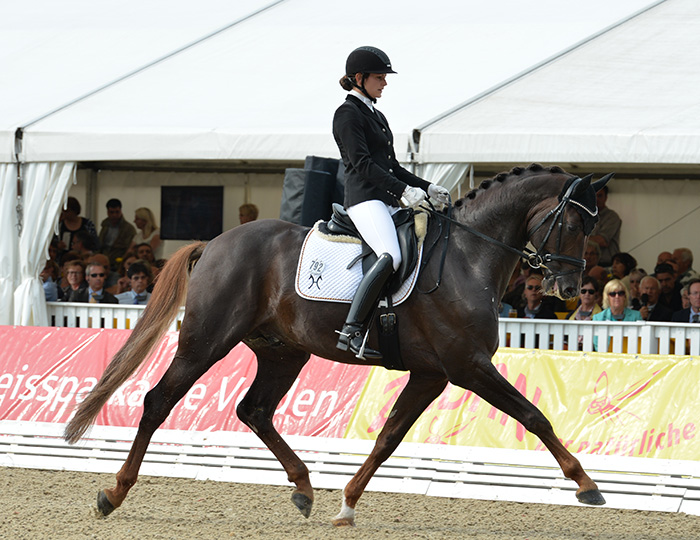
Quaterback’s stallion son, Quatensprung. The young stallion stands at the famous Klosterhof Medingen stud.
Are there certain mares that he is best with?
“Now that he is eleven, we know what is the best mare for him, the longer the stallion lives, the better you know what he needs. He needs some blood from the Thoroughbred and also from the Trakehner line. He needs very solid mares who are clear in the head and have a very good character – all his offspring have very good movement, for example last year in the Bundeschampionate, in the five-year-old class, there were five young horses by him. They are light to ride, but the rider must be good, his progeny are no sleepy heads.”
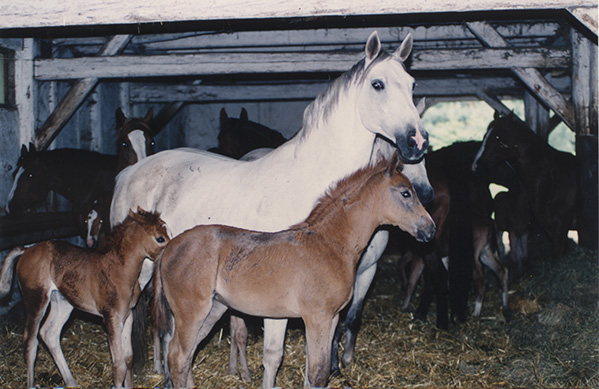
The mares and foals in the barn for the night on our first visit in 1989…
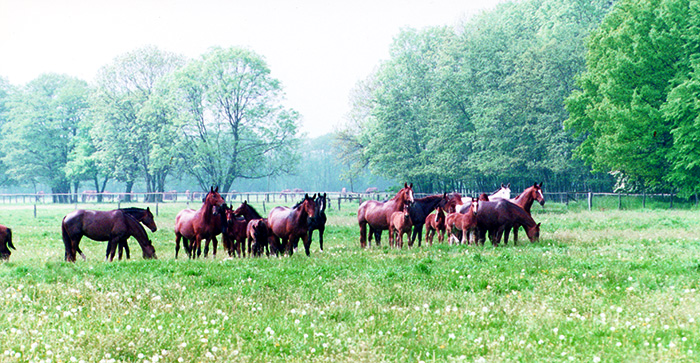
Then outside for the day
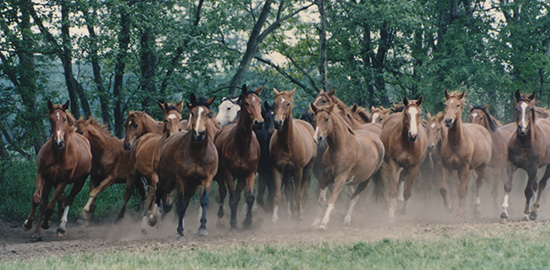
The youngsters enjoy a gallop
Your stud is a little different, you have many mares of your own, does that make it easier for you?
“I think so. We have 35 mares on our farm, and we breed with them – but horse breeding is very expensive, and for us it is not so easy to explain to the politicians that we need to breed these horses. That is traditional for Neustadt, and many people come to visit us, last year there were 50/60,000 visitors. Neustadt is world heritage, we were founded in 1778… and it is very good for our area. We give thanks to the Prussian King that he made these very fine buildings, the stud has been breeding for 225 years.”
Philharmonie, Chris’ favourite, with Belantis at foot
Can you tell me about the mother line of Belantis – is this one of your traditional mare families?
“This a very traditional line. The first mare was Paulina, we bred with this line for many years, she was born in 1937 – it is our well-known ‘P’ line that produced Poetin and Quaterback. The grandfather is a Holstein stallion, Expo’se, and this stallion was ridden very well by Mr Flamm (Christian Flamm who was stud rider), successful to Intermediate I & II. So we have a little bit of jumping in this mother line, and I think that is
very successful.”
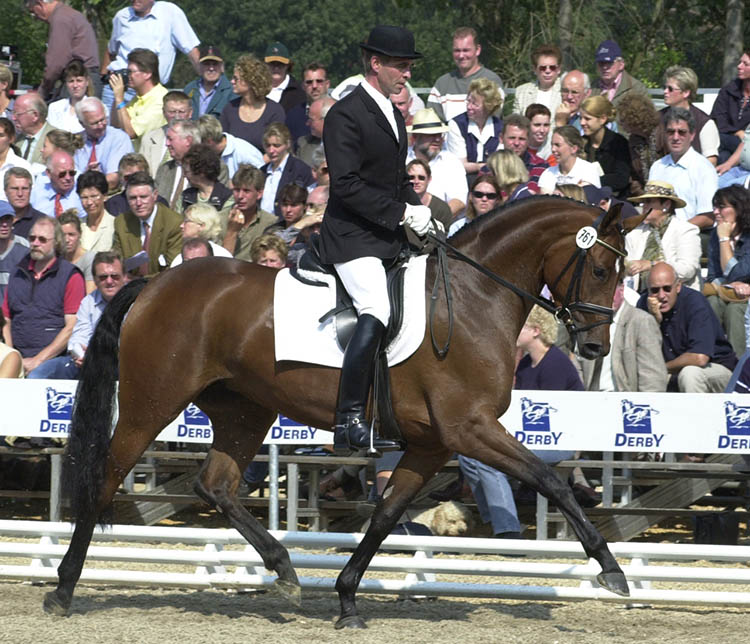
Prima Ballerina, another mare from the P line, competing at the Bundeschampionate with Hans Heinrich Meyer zu Strohen
“Last year out of Philharmonie, the mother of Belantis, we bred a very nice filly, by Don Juan de Hus (Jazz / Krack C).”
Poetin l with Katrin Meyer zu Strohen at the Bundeschampionate
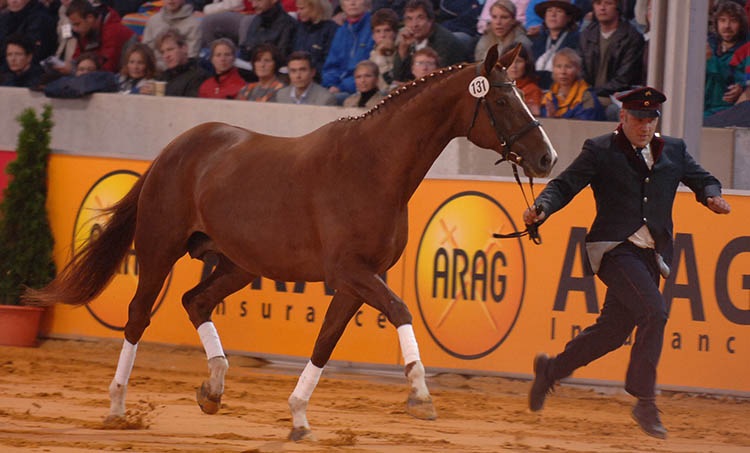
Poesie at 19 – she produced all the Poetins and Samba Hits
Poetin, World Champion, then sold for 2,5,000 euros. Her mother, Poesie, was also the dam of the Samba Hits.
You were one of the first to use Sandro Hit, and Poetin was the first really famous foal of Sandro Hit, looking at it now, was Sandro Hit a good thing, or a bad thing?
“Poetin was born in 1997, and at this time, I think Sandro Hit was a good thing, but now Sandro Hit is in the second and third generation, and I think that is enough – I don’t think we need him now. The offspring are difficult to ride, but we have a very good mother line. Sandro Hit was a bit crazy, but we have a filter, our mother line is very good in its temperament… At the time Sandro Hit was a good combination with our mares, but that was ten years ago, and now we have other good stallions, and we need horses with a good rideability, three good gaits – especially walk. And with Sandro Hit we never have a good walk!”
More follows
Like to breed to these lines in Australia? Go to www.ihb.com.au and find out what exciting European stallions they have on offer, like Quatererback
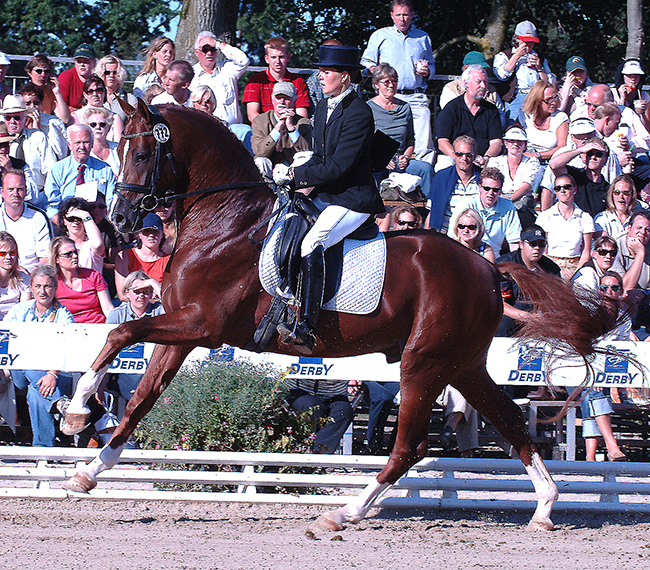
Which stallions are you using in your jumping horse program now?
“Now we take some stallions from France. Two years ago, we bought a stallion by Diarado, from the Oldenburg Jumping studbook – Discar, out of a Caretino grand-daughter. He was the reserve champion in the licensing, and reserve champion in the 30 day test. Discar covered many mares in our area, this year we have the first foals and we are pleased. He is a very good jumper. We also bought at the Munich licensing, a very nice stallion by Flipper d’Elle, out of a Candilo / Landgraf mare – Flipper d’Elle is from the Ibrahim line, a very good stallion.”
“We also have used Mylord Cathargo, and yesterday we had one filly born, out of an Abgar mare, and we have another Abgar mare in foal to Mylord, and we hope that it will be a colt. We need this blood in our stallion lines.”
“We need interesting stallions for our future.”
What do you think the French blood will add to your program?
“I think we need the French blood, but pure French blood is not so nice to use. I take the French blood on the father line, with German blood on the mother line, that is better. For me, the French horses are not so nice in the head, sorry, and most breeders want a good head. I think with a good mother line, Holstein or German Sport horse from our area, then it is possible to use the French stallions.”
Have you used Baloubet de Rouet?
“Yes, and we have bred a good stallion by his son, Balou de Rouet, but we had to sell him for very much money to Mr Sprehe, and he is now jumping with his son.”
In dressage where do you see the next bloodline coming from?
“It is a very difficult question. Right now in Western Europe, there are very successful dressage horses from Holland, and also from Denmark. The lines come from Germany, but they have a very good system for selection through the performance test, and importantly, they use the x-rays in the selection. We need this also in our area. So I think we can use a little bit the blood from The Netherlands.”
From Jazz?
“Jazz a little bit. I have this year, two stallions where the father lines are from The Netherlands. One is Vis a Vis, he is by Vitalis, by Vivaldi, and out of a Florestan mare. The next is Bombastic, he is by Boston who is Jazz / Flemmingh out of a grand-daughter of De Niro.”
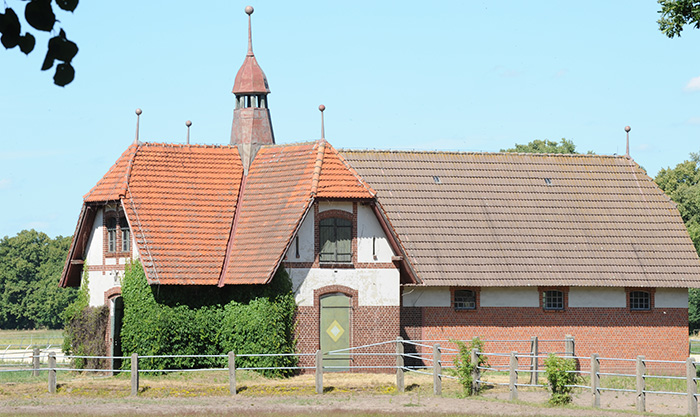
Is this a difficult line to deal with, the Jazz horses have the reputation of being a little crazy?
“I think we must be the same as with the French, the father line from The Netherlands, and the mother line from Germany, so in the next generation we have 25% from Jazz or from Flemmingh…
How much longer will you stay being the director here at Neustadt?
“One year, then I am 65 and now I must help my manager, and the director who comes after me make the transition. In the last year I have been doing quite a lot of judging, especially for the Arab horses – I was last year in Kuwait, in Qatar, Iran – it was a very nice time.”
I am sure it will be a very nice time, but I’ll certainly miss the opportunity to drop into Neustadt and spend time with such a knowledgeable and friendly director…
This article first appeared in the September 2014 issue of THM.
Available in Australia from International Horse Breeders – Quantensprung and many more of the stallions Dr Mueller discusses – go to: www.ihb.com.au



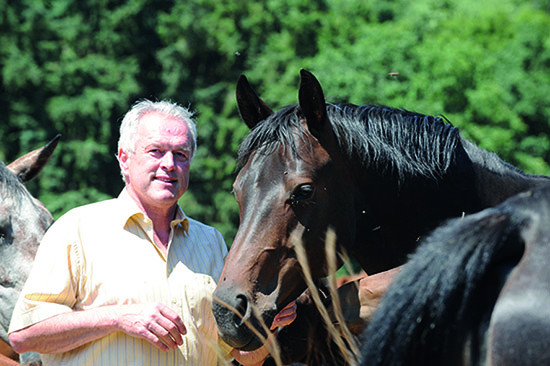
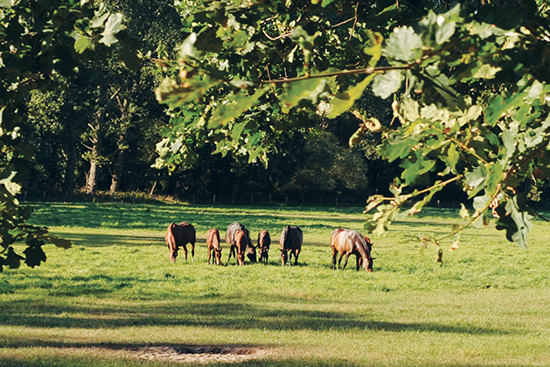
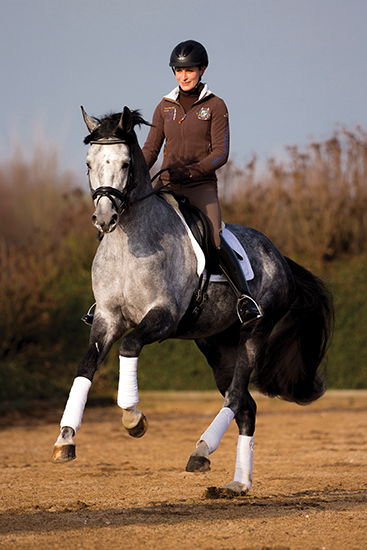
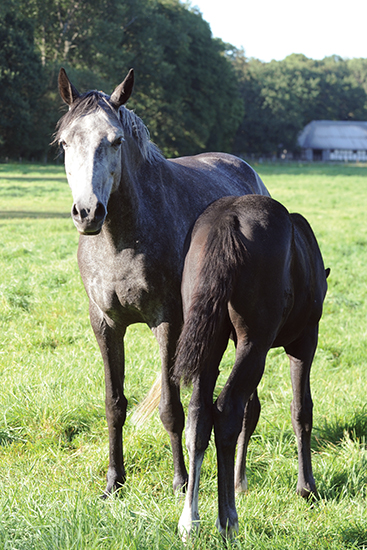
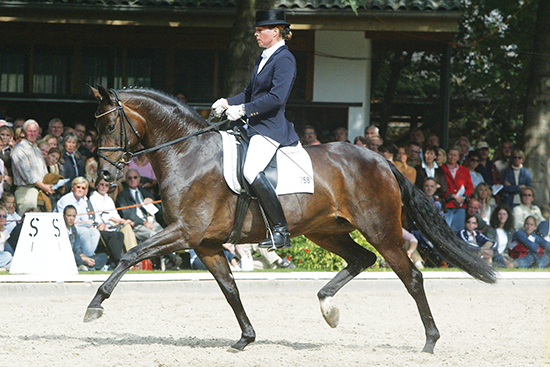
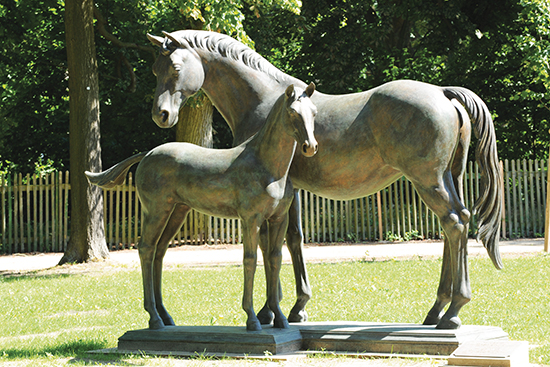
Quatensprung is an example of the unbalanced of a on the foreleg moving horse.